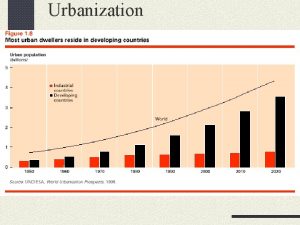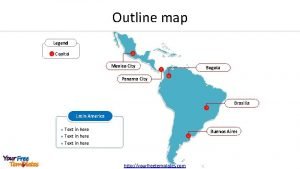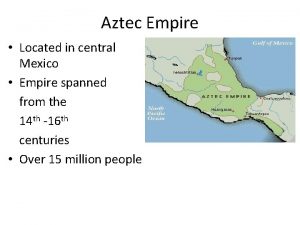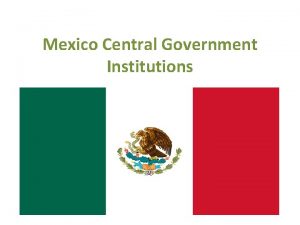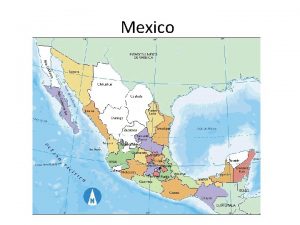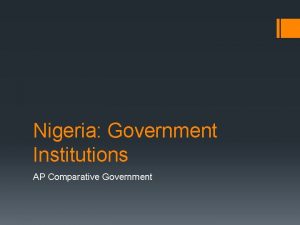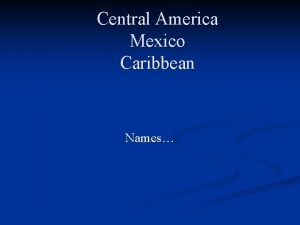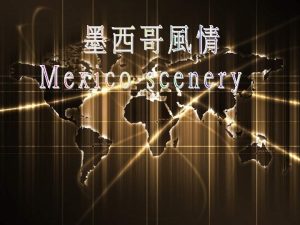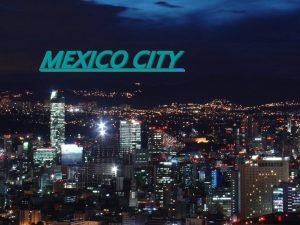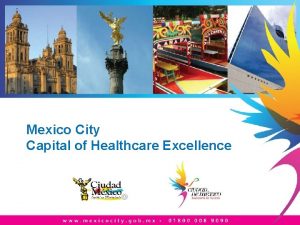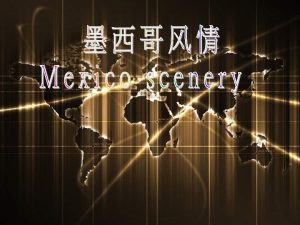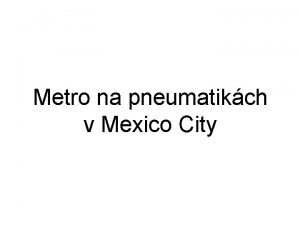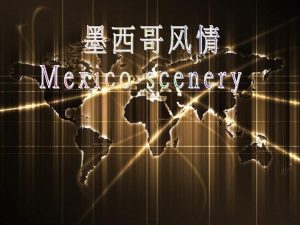Mexico Central Government Institutions Modern Mexico City Seat












- Slides: 12

Mexico Central Government Institutions

Modern Mexico City • Seat of the national government of Mexico • Quintessential primate city • One in four Mexicans live in the metropolitan area

The Zócalo: Heart of the Primate City

Political Structure and Institutions § Nature of the regime? Three-party democracy evolving toward “true” democracy? § Hybrid: part-free, part authoritarian § Democratic breakthrough election of 2000 § On paper: a presidential system, three autonomous branches of government with checks and balances, and federalism with considerable autonomy at the local level § In practice: decision-making highly centralized; president dominated the legislative and judicial branches

National Executive of Mexico • Presidential term – 6 years • Calderon – won with a plurality of. 5% over his nearest rival • Immigration to the United States divisive issue • Power of drug cartels threatens the legitimacy of his government Felipe Calderon: President 2006 -2012

Senate Cámara de Senadores or Senado • Composed of 128 senators – Two for each of the 31 states – two for the Federal District – Elected under the principle of relative majority • Thirty-two national senators elected at-large • At large senators divided among the parties in proportion to their share of the national vote.

Senate of Mexico Party Composition • Main Senate Chambers at corner of Donceles and Xicotencatl Streets in the historic center of Mexico City. • PAN 52 (40. 6%) • PRD 33 (25. 8%) • PRI 29 (22. 7%) • Green 6 (4. 7%) • Others • 8 (6. 3%)

Chamber of Deputies of Congreso de la Unión • Popular legislative branch of the Mexican national government. • Structure and responsibilities are defined in the 1917 Constitution

The Chamber of Deputies • One "deputy" for every 200, 000 citizens. – 500 deputies as of 2006 election. • 300 -directly elected by plurality from singlemember districts • 200 "party deputies" assigned through proportional representation. • • • PAN • PRD • PRI 206 41. 2% 126 25. 2% 104 20. 8% • Green • Other 19 3. 8% 45 9%

Chamber of Deputies after 2006 Election • PAN has largest number of deputies – Lacks majority – Negotiations for alliances under way • PRD congressmen more open to cooperating with PAN than is Lopez Obrador • Once dominant PRI plays increasingly important role

Supreme Court of Mexico • Eleven members – President – 10 associate justices • 15 year terms • President nominates three candidates • Elected by two-thirds vote of senate • Not elgible for second term

ESTABLISHING THE RULE OF LAW A Work in Progress • Law traditionally enforced to favor powerful and wealthy • 1994 Zedillo judicial reforms – Power of judicial review expanded – Courts kept on short leash • Police often are participants in crime rate • Violence has increased and people in general don’t feel safe
 Is mexico city a primate city
Is mexico city a primate city Division for public institutions and digital government
Division for public institutions and digital government Mexico principles
Mexico principles Pemex san juanico
Pemex san juanico What river separates texas from mexico
What river separates texas from mexico Eater mexico city
Eater mexico city Bleve mexico city 1984
Bleve mexico city 1984 St patricks day mexico city
St patricks day mexico city Whats the weather like in london
Whats the weather like in london Legend capital
Legend capital National powers
National powers Empire located in central mexico
Empire located in central mexico Map of mexico and central america
Map of mexico and central america
